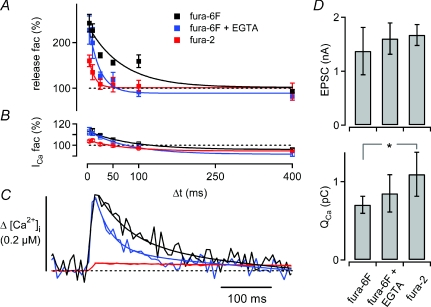Figure 4. Probing the effect of presynaptically added Ca2+ buffers on Ca2+ current facilitation, transmitter release facilitation, and residual [Ca2+]i.
A, average time courses of paired-pulse facilitation of transmitter release recorded in the presynaptic presence of 100 μm fura-6F (n = 4; black), 100 μm fura-6F and 75 μm EGTA (n = 4; blue), and 50 μm fura-2 (n = 4; red). B, average time course of Ca2+ current facilitation (same colour code as in A). C, average residual [Ca2+]i signals in response to single depolarizations measured under the three different presynaptic Ca2+-buffering conditions. The [Ca2+]i traces were offset on the y-axis such that the baseline [Ca2+]i values before stimulus onset overlapped. Note that the time course of transmitter release facilitation (A) and the decay of [Ca2+]i (C) are more sensitive to adding EGTA than the time course of Ca2+ current facilitation (B). D, average control EPSC amplitudes (top), and control Ca2+ charges (bottom) under the different Ca2+-buffering conditions. In the presence of fura-2, the Ca2+ charge was significantly larger as compared with fura-6F alone (P = 0.04), but the EPSC amplitudes were not significantly different between the various Ca2+-buffering conditions, indicating a slight suppression of transmitter release by 50 μm fura-2. The average data in A–D are from the same data set (n = 4 cells for each Ca2+-buffering condition).

